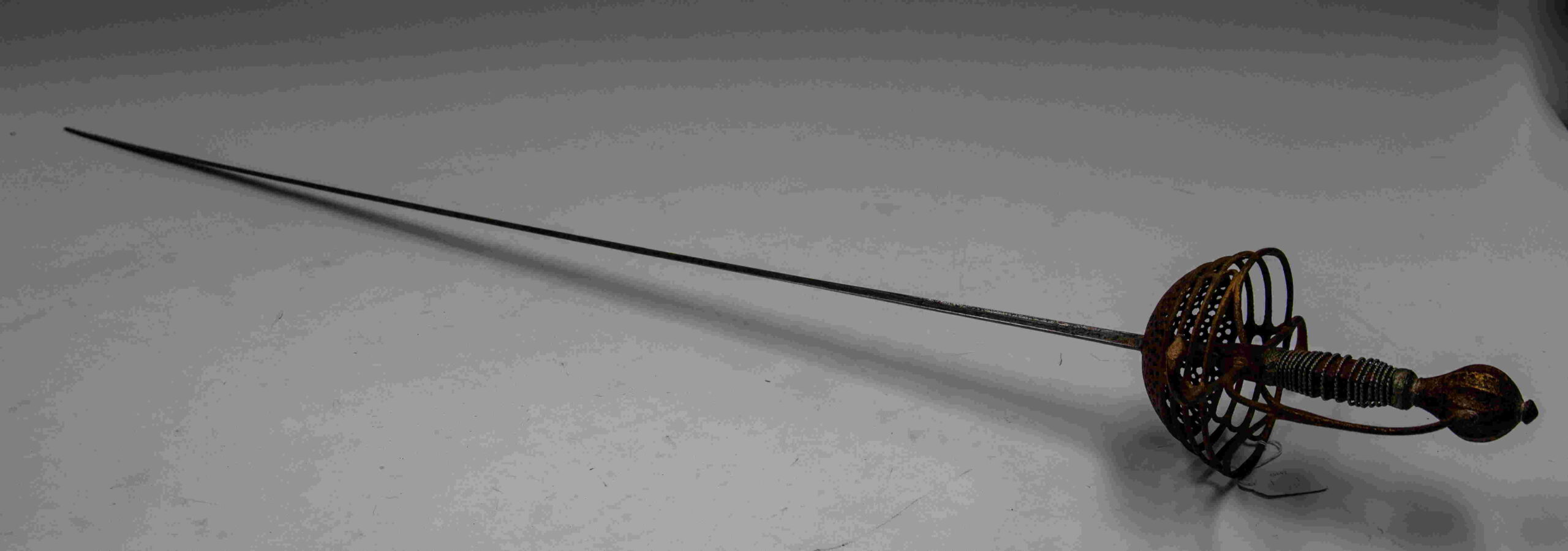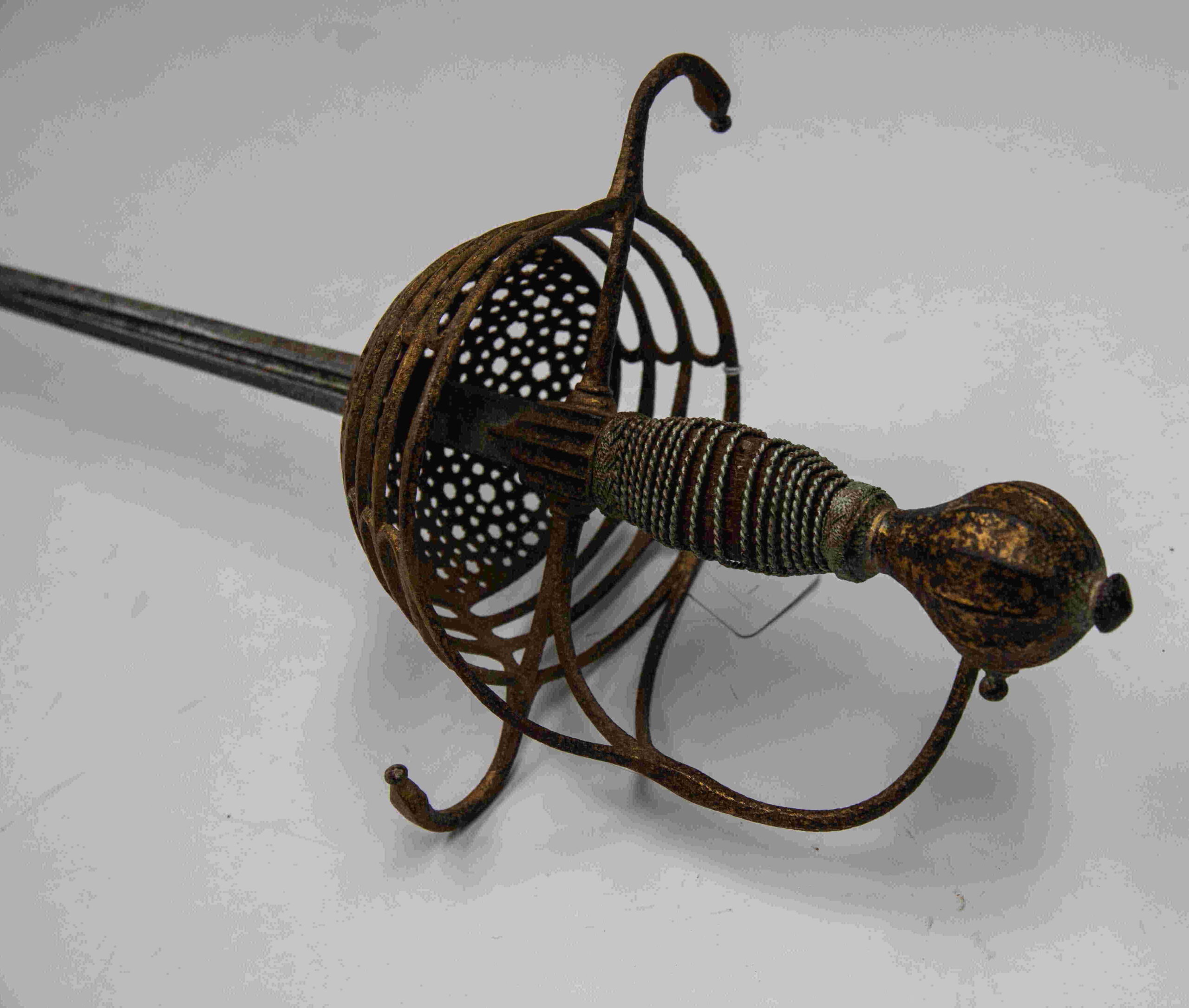Duelling sword is a cut above
A centuries-old duelling sword worthy of The Three Musketeers – found on a rubbish dump – has stunned antiques experts at a valuation event.
The 17th or 18-century continental cup-hilted rapier, the principal civilian sidearm from the 1600s designed to kill adversaries in duels, turned up at a drop-in antiques day in the Midlands.

Possibly Spanish, the sword made for cut-and-thrust fencing has a double-edged steel blade with a short fuller, a groove on the flat side of the blade. The pierced-cup, knuckle guard and fluted pommel show the remains of a gilded surface.

The Staffordshire seller said: “My dad found the sword when he was a nine-year-old boy living in Abridge, Essex, during the Second World War. He also found a pair of flintlock pistols! My nan found them under his bed. She said he had to get rid of the pistols and disposed of them. But dad was allowed to keep the sword and proudly displayed it above his bed. During my childhood it used to be on the landing wall. In later years I had it on a wall too but, after a house move, it never went back up because it didn’t go with anything. It ended up at the back of a wardrobe.”
Charles Hanson, owner of Hansons Auctioneers, said: “This amazing sword turned up at one of our regular valuation events at the Moor Hall Hotel in Sutton Coldfield. I was thrilled to see it. It immediately reminded me of one of those swashbuckling Three-Musketeer-style fencing battles.

“But for a young boy’s fascination and foresight that sword, which is around 300 years old, could have been lost forever. I’m not surprised he hid it under his bed. It must have been a shock discovery for his mum, especially turning up with a couple of pistols! But it’s a wonderful historical find. The blade has some indistinct lettering, possibly stating ‘Toledo’, an area of Spain known for rapier blademaking.
“This type of slender, thrusting sword with ornamental hilts emerged in Europe in the 17th century. They were perfect for duels as the blade is long enough to control an adversary from a distance and strike with agility. The word ‘rapier’ is derived from the French word rapié, which means to scratch. The sword’s thin, sharp point could penetrate clothing or light armour with ease. It’s regarded as an elegant, prestigious weapon thanks to its design and intricate craftsmanship.”
Charles continued: “It’s amazing when historical finds like this turn up at casual valuation events after gathering dust for years under beds, in cupboards or, as in this case, in the wardrobe. Gaining a professional assessment was a sharp decision on the seller’s part as the sword could achieve £500-£600 in Hansons’ August 7 militaria sale.”


